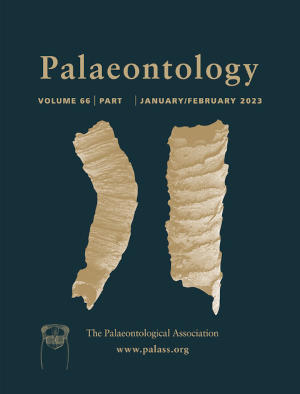Article: Associations between trilobite intraspecific moulting variability and body proportions: Estaingia bilobata from the Cambrian Emu Bay Shale, Australia
Publication: Palaeontology
Volume:
66
Part:
3
Publication Date:
2023
Article number:
e12651
Author(s):
Harriet B. Drage, James D. Holmes, Diego C. García-Bellido, and John R. Paterson
Abstract
Abstract Trilobites were notably flexible in the moulting behaviours they employed, producing a variety of moult configurations preserved in the fossil record. Investigations seeking to explain this moulting variability and its potential impacts are few, despite abundant material being available for study. We present the first quantitative study on moulting in a single trilobite species using a dataset of almost 500 moult specimens of Estaingia bilobata from the Cambrian (Series 2, Stage 4) Emu Bay Shale, South Australia. Specimens were categorized by moulting mode (Salter's or Sutural Gape) and their associated configurations, and their body proportions measured from both a museum collection (including a bycatch sample) and a randomly-collected field sample. This enabled analysis of the proportion of E. bilobata specimens displaying the Sutural Gape and Salter's modes of moulting and their different configurations, and tests for association between moulting behaviour and body proportions. The results show a wide range of E. bilobata moulting configurations in all samples, suggesting that configurations represent definable instances in a largely continuous spectrum of variation. Analyses comparing body proportions of specimens showing the two modes of moulting were non-significant, suggesting there is no true association between moulting behaviour and body proportion, except for a single significant result for body length. All results were relatively consistent between the museum and field samples. However, removing accessioned specimens from the museum sample brought results even further in line with the field sample, supporting the need for consideration of museum collection bias in palaeontological analyses.
